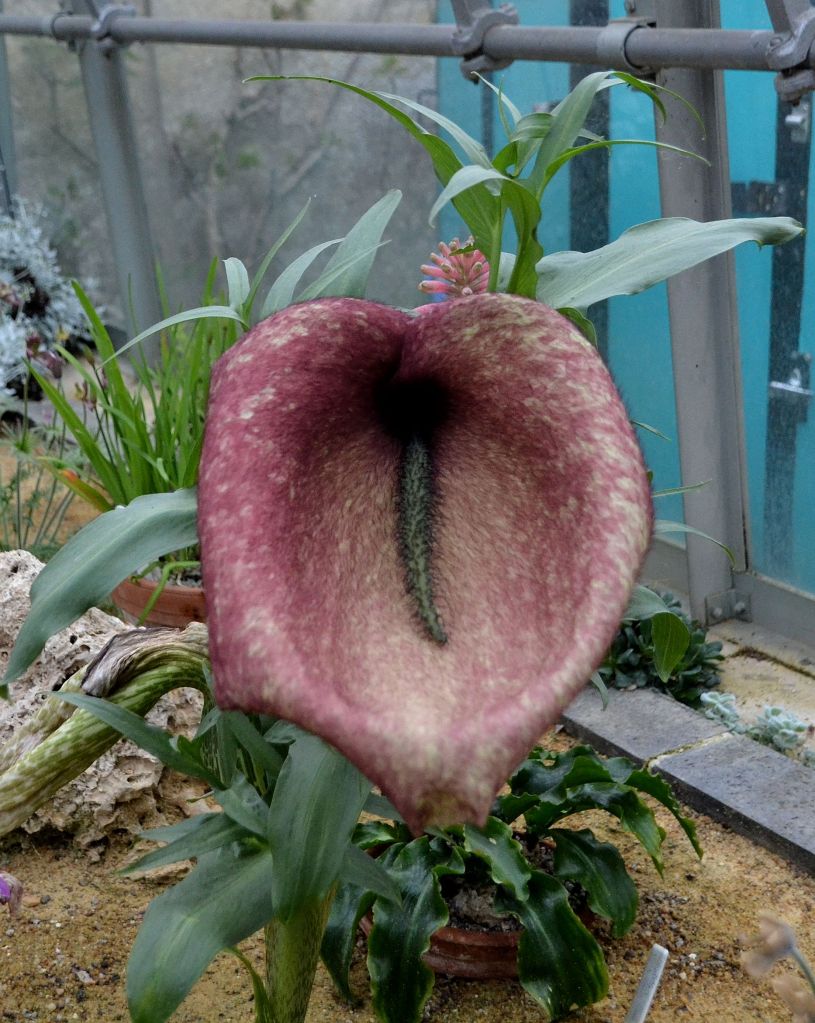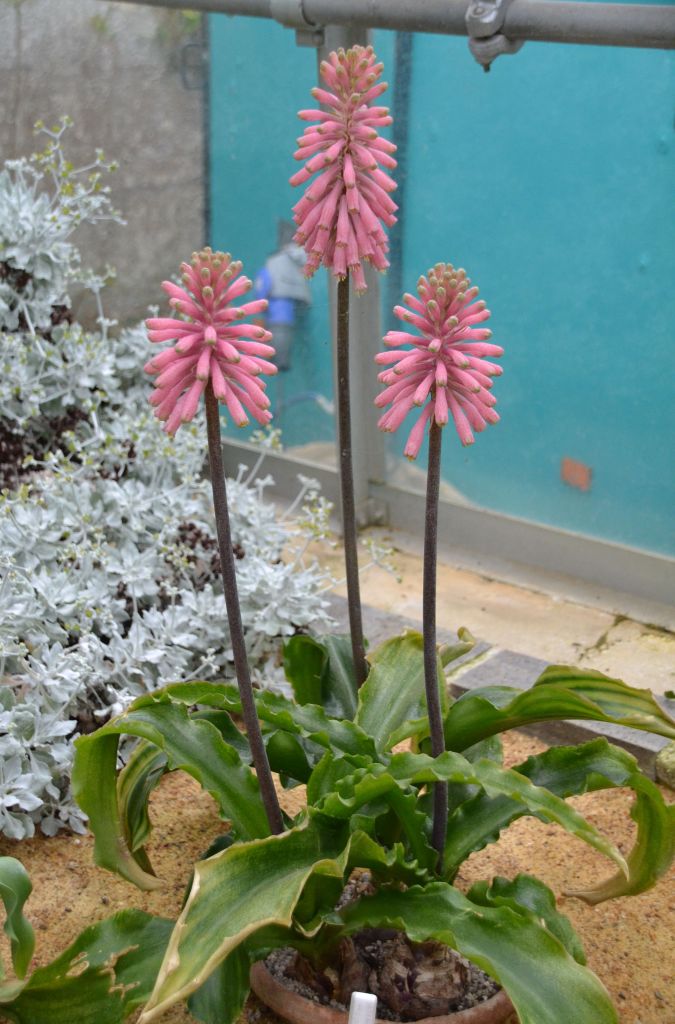Look what I came across on a visit to the University of Oxford Botanic Garden today – a mature Helicodiceros muscivorus or “Dead Horse Arum” in full bloom! To say I was at once transformed into a child in a sweet shop / candy store is an understatement. Being able to experience this most strange, alluring and spectacular of Mediterranean Aroids in all its glory after four years of patient attempted cultivation at home was opportune indeed, as one of my own two tubers is meant to flower this year.


I asked an attendant how old the plant was and reading its label she said the stock dates from 1998, but this specimen could be younger. It had been in bloom for a number of days and was beginning to wilt, while a second stem and two smaller plants in the same glass house had already gone over. Presumably its odour was past its peak too, since this is reputed to be one of the world’s ten most foul smelling plants. Hence its colloquial name of “Dead Horse Arum” in Europe, while across the pond it enjoys the epithets “Pig Butt Arum” and “Ass Plant”. Today the smell was quite gentle and certainly milder than some of the Aroids cultivated at Oxford’s alternative botanic garden here in the city’s green belt at Kings Copse Park.
This journal’s previous post on Helicodiceros muscivorus, coinciding with our acquisition of a FS2 tuber in October 2020 (see here) has now passed 300 referrals, with much of that interest coming from the United States. Given the proportions of the stems (below left) in the specimen seen today, I now doubt whether our own will perform as hoped this spring. It is the left hand growth in the picture (below right). The smaller growth is from a four year old tuber, and that one’s size this season is indeed encouraging, but still some way to go with both perhaps?


I shall of course persevere, especially having now witnessed what the outcome should be. To recap this scarce Aroid occurs in the wild only in the Tyrrhenian and Balearic islands of the Mediterranean, on rocky, coastal cliff tops. But it is more widely cultivated by specialist sources in both Europe and the US and much sought by Aroid enthusiasts. The images suffer from being attempted against glass and the light, but give the general impression.
In close proximity were two very attractive examples of Veltheimia capensis (below, centre and right), a South African bulbous plant (also known as “Sand Lily” or “Cape Poker”) that I first experienced at RBG Kew in February 2020 (below left). Then I was inspired to acquire bulbs of two Veltheimiae from an online supplier, of which the capensis failed. I am learning how imported exotic bulbs can be of variable quality since buffeting and bruising can occur in transit and if so they rot fairly quickly as in that case.



V capensis is one of just two species in the Veltheimia genus. It produces glossy rosettes of wavy or curled, grey-blue leaves and stout stems in September, followed by long lasting, nodding tubular flowers from mid-winter. Plants are usually coral pink but scarcer pale yellow forms also exist. The second variety is the evergreen V bracteata that is said to make a good container plant in British conditions and be suited for indoor cultivation. Our own acquisition at KCP BG has performed well (see here) in its second season after producing a rather puny bloom during the past winter.
The University of Oxford Botanic Garden (see here) is one of the world’s oldest scientific gardens and the longest established in Great Britain. Currently celebrating its 400th anniversary, it contains over 5000 different species representing more than 90 per cent of the higher plant families. I was struck today by finding so many herbaceous plants that also grow here at KCP BG and the different varieties of them present. Hence I have become a season ticket holder and will track these regularly through the growing season ahead.
